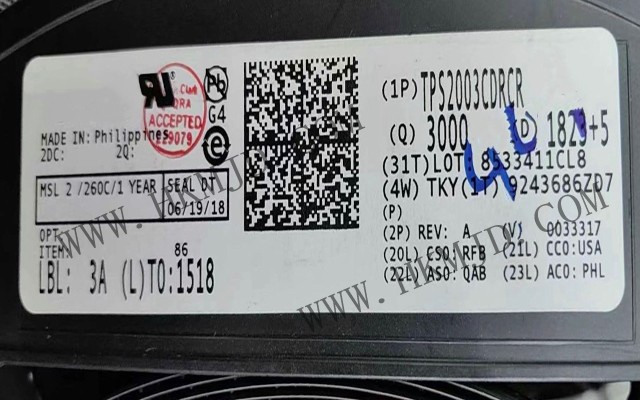Welcome Here Shenzhen Mingjiada Electronics Co., Ltd.

sales@hkmjd.com

sales@hkmjd.com

Service Telephone:86-755-83294757
 Latest Information
Latest Information Home
/Industry Information
/
Home
/Industry Information
/
Wi-Fi MCU Chip for AI Toys, Reshaping the Underlying Revolution in Smart Interaction
Recently, the rapid popularisation of AI toys has driven the rise of a new market segment: Wi-Fi MCU chips. These chips, which serve as the core components connecting AI toys to cloud intelligence, are becoming one of the fastest-growing sub-markets i…
Recently, the rapid popularisation of AI toys has driven the rise of a new market segment: Wi-Fi MCU chips. These chips, which serve as the core components connecting AI toys to cloud intelligence, are becoming one of the fastest-growing sub-markets in the consumer electronics sector. These thumb-sized integrated circuits, tasked with connecting cloud intelligence to end devices, are quietly reshaping the value chain of the toy industry.
The Wi-Fi MCU chip industry in the Chinese market is expanding at an astonishing rate. In 2024, the market size of this sector exceeded 18.5 billion yuan, representing a year-on-year growth of 23%.
Meanwhile, toy manufacturers in Guangdong and other regions are receiving AI plush toy orders in the millions, with a single hit product like ByteDance's ‘Xianyanbao’ driving the procurement of millions of chips, further fuelling the growth of Wi-Fi MCU chips. Additionally, chip costs have dropped from 15-20 yuan per module in 2023 to 7-10 yuan, with hardware costs accounting for only 10% of the product's selling price, yet supporting a premium margin of over 10 times.
This disparity between cost and value has made AI toys one of the highest-margin categories in the consumer electronics sector, with gross margins typically reaching 70%-90%.
From a market landscape perspective, the overall trend is one of a dominant leader with multiple strong competitors. Espressif Systems leads the market with a 28%-35% market share, thanks to the outstanding performance of its ESP32 series chips, which are adopted by leading manufacturers such as ByteDance and BubblePal.
The second-tier players, including Broadcom Integrated Circuits, Rockchip, and Allwinner Technology, are carving out market share through differentiated strategies: Broadcom Integrated Circuits' BK7258 chip integrates the Volcano Engine large model to enable real-time voice interaction on the device side; Rockchip's RK1808 chip integrates an NPU unit to support lightweight AI model local inference; and Allwinner Technology's R128 chip provides multi-modal interaction capabilities for the Tomcat robot.
Behind these technological breakthroughs lies the deep integration between chip manufacturers and AI companies—Espressif has partnered with Doubao's large model to launch a ‘chip + AI software’ solution, while Yiguang Communications and Guanghe Tong have developed module solutions integrating the DeepSeek model, forming a complete ecosystem from chips to applications.
Technologically, the new generation of Wi-Fi MCU chips has broken through the limitations of pure connectivity, evolving into the role of an ‘intelligent hub.’ Espressif's ESP32-S3 series supports dual-mode connectivity with Wi-Fi 4 and Bluetooth 5.0, and its built-in ESP-NN library enables voice wake-up and image recognition; Jiely Technology's AC791N chip features a matrix accelerator, enabling it to run lightweight large models like DeepSeek-R1, keeping edge AI inference latency under 200 milliseconds.
What is even more noteworthy is the trend toward multi-protocol integration, with the proportion of chips supporting IoT protocols such as Zigbee and Thread increasing from 35% to 45%, enabling AI toys to seamlessly integrate into the smart home ecosystem. These technological advancements are driving a transformation in product forms: entry-level chips costing 5-8 yuan support smart accessories priced at around 100 yuan, while high-end companion robots equipped with NVIDIA Jetson chips are priced above 1,000 yuan, with the chip cost ratio expected to rise to 20%.
In the application market, the smart home sector accounts for 45% of the market share. AI plush toys combine pressure sensors with voice modules to achieve natural interaction through ‘touch-to-talk’ functionality. The industrial IoT sector has given rise to outdoor educational robots supporting ultra-long-range connections of up to 1 kilometre.
Even more imaginative is the field of affective computing, where Meta's ImageBind multimodal model combined with micro-expression recognition chips enables toys to perceive children's emotional changes, opening up new avenues in education and medical rehabilitation. The rise of open-source ecosystems allows DIY enthusiasts to train voice models based on modular chips, giving rise to niche markets such as customised otome game characters. This means chip manufacturers must simultaneously meet the needs of B2B scalability and B2C personalisation.
Of course, there are still many challenges in the market. Technologically, balancing the computational power requirements of multimodal interaction with power consumption control remains a challenge, and heterogeneous computing architectures supporting the integration of visual, tactile, and environmental perception are not yet mature. In terms of security, demand for encryption chips compliant with GDPR standards is surging, and Trusted Execution Environments (TEEs) are becoming standard.
From a market perspective, the polarisation between high-end and mass-market segments is intensifying. Zhuhai Taixin has reduced the price of its entry-level overall solution to under 10 yuan, accelerating the adoption of AI toys in rural areas.
Conclusion
The surge in AI toys fundamentally represents a qualitative transformation of Wi-Fi MCU chips from connectivity tools to intelligent hubs. As technologies such as edge AI, multimodal interaction, and affective computing mature, this once low-tech sector is emerging as a new battleground for semiconductor giants and innovative companies. In the future, those who can find the optimal balance between performance, cost, and ecosystem synergy will gain a competitive edge in this AI toy revolution.

Time:2025-08-13

Time:2025-08-13

Time:2025-08-13

Time:2025-08-13
Contact Number:86-755-83294757
Enterprise QQ:1668527835/ 2850151598/ 2850151584/ 2850151585
Business Hours:9:00-18:00
E-mail:sales@hkmjd.com
Company Address:Room1239, Guoli building, Zhenzhong Road, Futian District, Shenzhen, Guangdong
CopyRight ©2022 Copyright belongs to Mingjiada Yue ICP Bei No. 05062024-12

Official QR Code
Links: